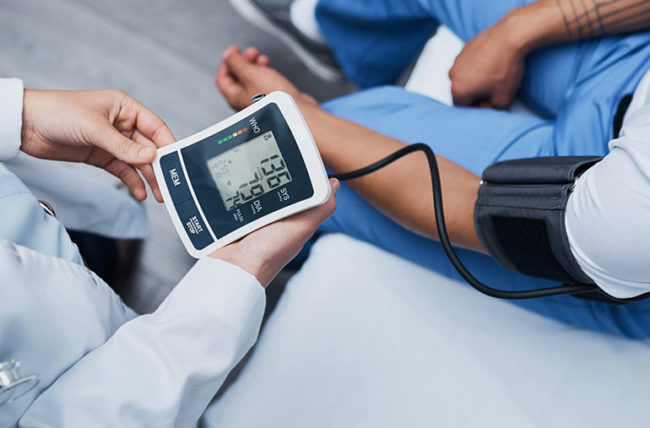High blood pressure (HBP), refers to the pressure of blood against your artery walls. Over time, high blood pressure can cause blood vessel damage that leads to heart disease, kidney disease, stroke, and other problems.
1. Bananas
Bananas contain plenty of potassium, a mineral that plays a vital role in managing hypertension. One medium-sized banana contains around 422 milligrams of potassium.
According to the American Heart Association, potassium reduces the effects of sodium and alleviates tension in the walls of the blood vessels. Adults should aim to consume 4,700 milligrams (mg) of potassium daily. Other potassium-rich foods include:
- avocado
- cantaloupe and honeydew melon
- halibut
- mushrooms
- sweet potatoes
- tomatoes
- tuna
- beans
- People with kidney disease should speak to their doctors about potassium, as too much can be harmful.
2. Watermelon
Watermelon contains an amino acid called citrulline, which may help to manage high blood pressure. Citrulline helps the body to produce nitric oxide, a gas that relaxes blood vessels and encourages flexibility in arteries. These effects aid the flow of blood, which can lower high blood pressure. In one study, adults with obesity and prehypertension or mild hypertension who took watermelon extract showed reduced blood pressure in the ankles and brachial arteries.
The brachial artery is the main artery in the upper arm. Researchers have also found that animals given a diet rich in watermelon had better heart health. In one study, mice who drank a solution containing watermelon juice had 50 percent less plaque in their arteries than the control group.
The mice who drank the solution also had 50 percent less low-density lipoprotein cholesterol, which many describe as bad cholesterol, and they showed 30 percent less weight gain than the control animals.
To boost watermelon intake, add the fruit to salads and smoothies, or enjoy it in a chilled watermelon soup.
3. Oats
Oats contain a type of fiber called beta-glucan, which may reduceTrusted Source blood cholesterol levels. Beta-glucan may also lower blood pressure, according to some research. A review of 28 trialsTrusted Source concluded that higher consumption of beta-glucan fiber may lower both systolic and diastolic blood pressure. Barley also contains this fiber.
Start the day off with a bowl of oatmeal, or use rolled oats instead of breadcrumbs to give texture to meat or vegetarian burger patties.
4. Leafy green vegetables
Leafy green vegetables are rich in nitrates, which help to manage blood pressure. Some research suggests that eating 1–2 servings of nitrate-rich vegetables every day can reduce hypertension for up to 24 hours.
Examples of leafy greens include: cabbage, collard greens, fennel, kale, lettuce, mustard greens, spinach, Swiss chard.
To consume a daily dose of green vegetables, stir spinach into curries and stews, sauté Swiss chard with garlic for a tasty side dish, or bake a batch of kale chips.
5. Garlic
Eating garlic can increase a person’s nitric oxide levels. Garlic is a natural antibiotic and antifungal food. Its main active ingredient, allicin, is often responsible for associated health benefits.
Some research suggests that garlic increases the body’s production of nitric oxide, which helps the smooth muscles to relax and the blood vessels to dilate. These changes can reduce hypertension.
One Source reported that garlic extract reduced both systolic and diastolic blood pressure in hypertensive people.
Garlic can enhance the flavor of many savory meals, including stir-fries, soups, and omelets. Using garlic instead of salt can further promote the health of the heart.
6. Fermented foods
Fermented foods are rich in probiotics, which are beneficial bacteria that play an important role in maintaining gut health. Eating probiotics can have a modest effect on high blood pressure, according to a review of nine studies.
The researchers reported more enhanced effects when study participants consumed:
- Multiple species of probiotic bacteria
- Probiotics regularly for more than 8 weeks
- At least 100 billion colony-forming units a day
- Fermented foods to add to the diet include: natural yogurt, kimchi, kombucha, apple cider vinegar, miso, tempeh
Some people prefer to take concentrated probiotic supplements every day. Probiotic supplements are available for purchase online.



